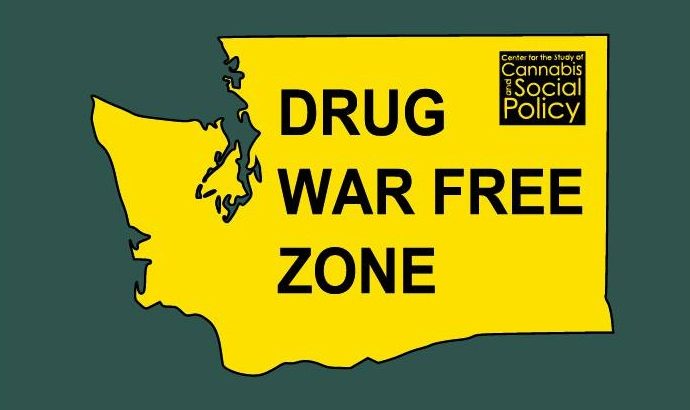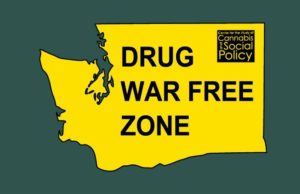by Dominic Corva, Social Science Research Director
The previous conceptual post really helped me find a way to engage with complex intersections without flying too far off the ground. Today’s post is an effort to deal with the “moral panic” phenomenon around medical cannabis in Washington, and elsewhere. I start with the assumption that policy that is created in response to moral panic is not good social policy, because (a) prohibition morality stems from fear not science and (b) in order to leave prohibition behind — the urge to punish our way to public health — we have to leave prohibition culture behind. And prohibition morality is perhaps the foundation of prohibition culture. It’s the equation of law with justice absent any critical reflection or nuance. If one is doing something legal, then one is doing something good. That attitude got us to mass incarceration and the politics of fear. Here’s a series of connected engagements with intersection of legality, medicality, and the moral distinction between Good and Bad Actors.
- Legality is a technical term, not a moral or ethical one. This is helpful to keep in mind as the State of Washington continues to deploy it as a moral or ethical one — State-legal cannabis is constructed as “good” versus “bad” medical and black cannabis. The logical problem: State-legal cannabis is Federally prohibited but tolerated under interpretations of the Cole Memo. Even those who argue that legality connotes moral superiority — those that disagree with the first sentence — have to face a simple logical argument: any moral or ethical quality associated with State legality is cancelled out by its simultaneous association with Federal illegality.
- The basic premise of ending the war on drugs rests on the assumption that laws can be unjust, and therefore morally wrong. The argument about whether legalization can be unjust (not that it is, or is not) is therefore supportable. The argument that legalization can also, at the same time, be just is also supportable. Efforts to critique legalization are not necessarily against legalization.
- So, technically: regulation and tax collection are the two main State practices of legalization. The active participation of the State in these two ways constitute what we mean by legalization. There are many dimensions to this participation: altering the legal code is both an end to the first step and the beginning of a network of practices associated with implementing legalization. The implementation of legalization — system creation, output and maintenance — is and always will be an ongoing process.
- Technically, this time with respect to medical cannabis: since “medicine” is not a state monopoly, medical cannabis means many, many things. For our purposes here let’s distinguish between medical state laws and “legal medical” state laws, since the former came first. Medical state laws are “decriminalization” laws for which the state plays no active implementation part. “Legal medical” laws require the active participation of the state via regulation and/or special taxation (independent of sales taxes, for example). The core of Washington’s current medical cannabis controversies stems from the State’s unwillingness to transition from medical to legal medical in 2011.
- Technically, this can be avoided in every state that adopts “legal medical” either as its first step or as a reform (see California); and then using the existing medical legality to develop (not replace wholesale immediately) the pre-existing legal system. Oregon’s decision to allow and tax over-21 nonmedical purchases at its medical retail points is one example of this. Technically, if the starting conditions for legal medical were unjust, this transition will not necessarily be a socially optimal one.
- Oregon is complying with the same Cole memo as Washington, so model variation can’t be explained by that. There was no technical reason why Washington’s medical cannabis system couldn’t have been more slowly transitioned, as the I 502 system continues to come on line. This is not the same as an argument that medical should have remained unregulated. “Regulation” as a practice as opposed to a concept deserves far more critical attention than I can give here.
- The illegality of medical cannabis under (some) State laws is now being used to stigmatize and exclude cannabis people by implementing high barriers to entry, while attempting to bring the plant as a commodity into a regulatory framework. That stigma is not necessarily new, and not confined solely to medical cannabis. In fact, the stigmatization of medical cannabis seems to be the re-enclosure of black market cannabis stigma to include informal medical cannabis markets. Prohibition culture never stopped fearing a stoned planet, and that fear is now being encouraged and amplified by legal cannabis militants. Pointing this out does not mean I conclude that “all cannabis markets are good.”
- I will say that the closer the consumer is to the grower, in any cannabis market, the easier it is to sort the good from the bad. The distance between consumer and farmer is a function of two things: prohibition, and the fact that most of the rest of the formal economy has been increasing that distance since the Industrial Revolution.
- Legal cannabis markets and actors are not inherently “good actors,” nor are they inherently “bad actors.” The legal economy is filled with bad and good actors — many of them both at the same time. The Gilded Age philanthropists whose names are plastered all over our urban landscapes were a symptom of massive inequality, against which the Labor Movement formed. Our second Gilded Age is no different.
- Medical cannabis markets and actors are not inherently “good actors,” nor are they inherently “bad actors.” Our medical system in the U.S. is totally commercial, a far cry from the single payer systems of most of our peers. Our herbal product markets are virtually unregulated. Our televisions give us medical advice. Our diet fads rage from year to year. And we are on more pharmaceutical drugs per capita than any other society on Earth. If there is anything nonprofit or community-oriented in a medical marijuana system, then our medical marijuana systems are far more socially conscious than virtually every sector of the formal economy that might be related.
There’s a lot of conditionality and open-ended starting points for engaging with prohibition culture, which is coming now not just from prohibitionists but legalization stakeholders. It should be clear that this critique does not apply to legalization stakeholders en masse. I have no idea how prevalent prohibition culture is amongst legalization stakeholders, but enough of them so that we are getting a socially violent transition via policy. It also should be clear that medical cannabis markets and actors are not necessarily less greedy than the level accepted for non-cannabis markets and actors. Neither of those facts should get in the way of basing policy on facts instead of fear in Washington State.

